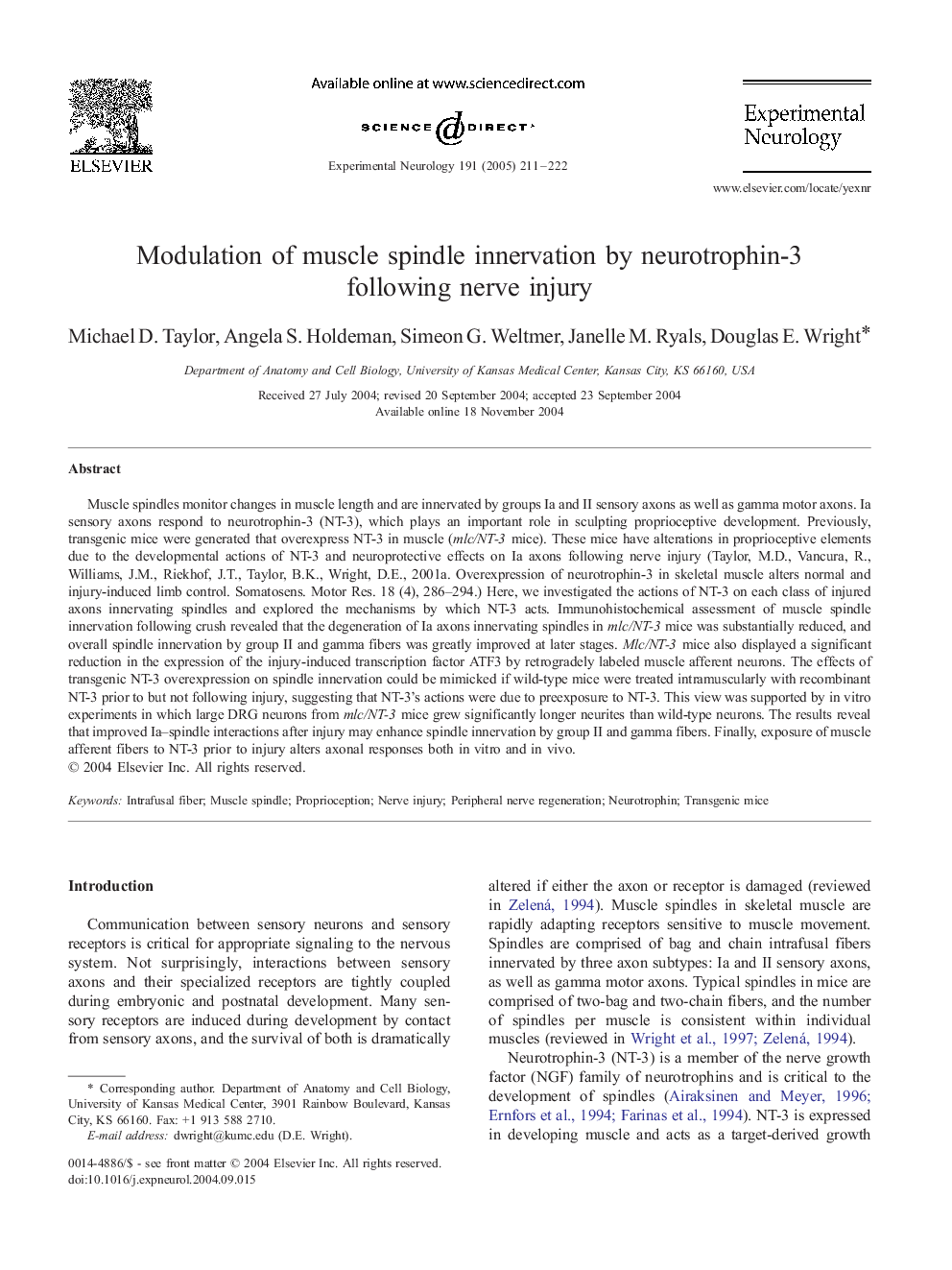| Article ID | Journal | Published Year | Pages | File Type |
|---|---|---|---|---|
| 9192149 | Experimental Neurology | 2005 | 12 Pages |
Abstract
Muscle spindles monitor changes in muscle length and are innervated by groups Ia and II sensory axons as well as gamma motor axons. Ia sensory axons respond to neurotrophin-3 (NT-3), which plays an important role in sculpting proprioceptive development. Previously, transgenic mice were generated that overexpress NT-3 in muscle (mlc/NT-3 mice). These mice have alterations in proprioceptive elements due to the developmental actions of NT-3 and neuroprotective effects on Ia axons following nerve injury (Taylor, M.D., Vancura, R., Williams, J.M., Riekhof, J.T., Taylor, B.K., Wright, D.E., 2001. Overexpression of neurotrophin-3 in skeletal muscle alters normal and injury-induced limb control. Somatosens. Motor Res. 18 (4), 286-294.) Here, we investigated the actions of NT-3 on each class of injured axons innervating spindles and explored the mechanisms by which NT-3 acts. Immunohistochemical assessment of muscle spindle innervation following crush revealed that the degeneration of Ia axons innervating spindles in mlc/NT-3 mice was substantially reduced, and overall spindle innervation by group II and gamma fibers was greatly improved at later stages. Mlc/NT-3 mice also displayed a significant reduction in the expression of the injury-induced transcription factor ATF3 by retrogradely labeled muscle afferent neurons. The effects of transgenic NT-3 overexpression on spindle innervation could be mimicked if wild-type mice were treated intramuscularly with recombinant NT-3 prior to but not following injury, suggesting that NT-3's actions were due to preexposure to NT-3. This view was supported by in vitro experiments in which large DRG neurons from mlc/NT-3 mice grew significantly longer neurites than wild-type neurons. The results reveal that improved Ia-spindle interactions after injury may enhance spindle innervation by group II and gamma fibers. Finally, exposure of muscle afferent fibers to NT-3 prior to injury alters axonal responses both in vitro and in vivo.
Keywords
Related Topics
Life Sciences
Neuroscience
Neurology
Authors
Michael D. Taylor, Angela S. Holdeman, Simeon G. Weltmer, Janelle M. Ryals, Douglas E. Wright,
